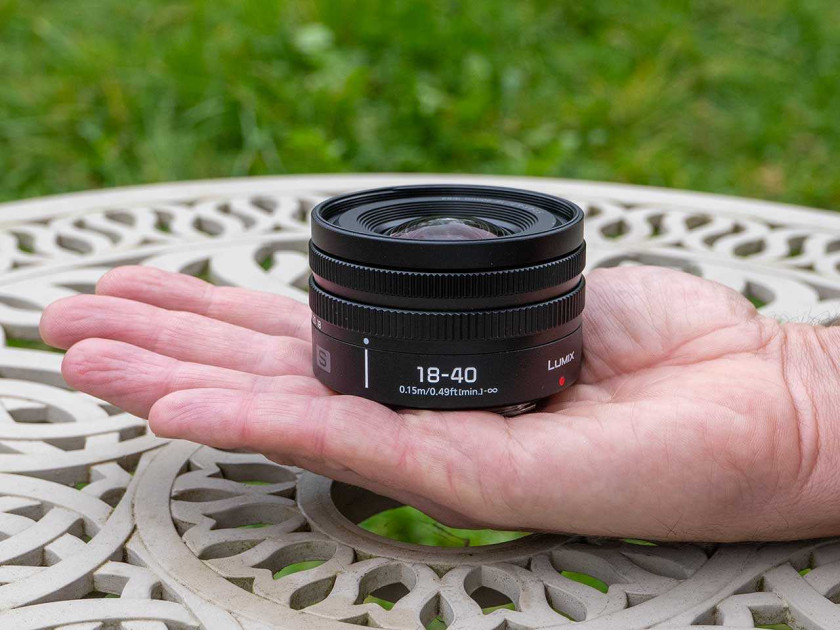
Introduction
The latest addition to the L-Mount range of full-frame lenses comes in the shape of the Panasonic Lumix S 18-40mm F4.5-6.3 (S-R1840E).
This is a versatile, weather-resistant super-wide-angle to standard zoom lens for the Panasonic, Sigma and Leica “L-mount” full-frame mirrorless camera system.
At the time of writing, it is officially the World’s smallest and lightest full-frame mirrorless zoom lens.
This lens features a variable maximum aperture of f/4.5-f/6.3 and has 7 rounded diaphragm blades. It is comprised of 8 elements in 7 groups, including three aspherical lenses, two ED (Extra-Low Dispersion) lenses and one UHR (Ultra High Refractive Index) element.
The Panasonic 18-40mm has a closest focusing distance of 0.15m/0.49ft and a maximum magnification of 0.28x.
It boasts a dust, splash and freeze resistant design that can operate at 10 degrees below zero and it has a flourine coating on the front element.
For video, the ultra-wide 18mm angle is particularly helpful in tight spaces, plus it is paired with a versatile minimum focus distance of just 0.15m. Panasonic also claims that the lens suppresses focus breathing and it has a fast and silent focusing motor.
The Lumix S 18-40mm F4.5-6.3 is available now priced at £519.99 / €579.99 / $499.99 in the UK, Europe and the USA respectively.
Ease of Use
The Panasonic Lumix S 18-40mm F4.5-6.3 is an incredibly small, compact and very light super-wide-to-standard zoom lens, measuring 4.09cm / 1.61inch in length, 6.79cm / 2.67inch inch in diameter and weighing in at just 155g / 0.34lb.
Compared to most of the other lenses in the range, it is positively miniscule. When mounted on the Lumix S5II mirrorless camera that Panasonic sent us for testing, the Lumix S 18-40mm lens feels extremely well-balanced and suitable for both one-handed as well as two-handed use.
This lens’ main rival, the Lumix S 20-60mm f/3.5-5.6, offers greater reach and slightly faster maximum apertures, but it measures 8.72cm in length and weighs 350g, over double the weight and length of the 18-40mm.
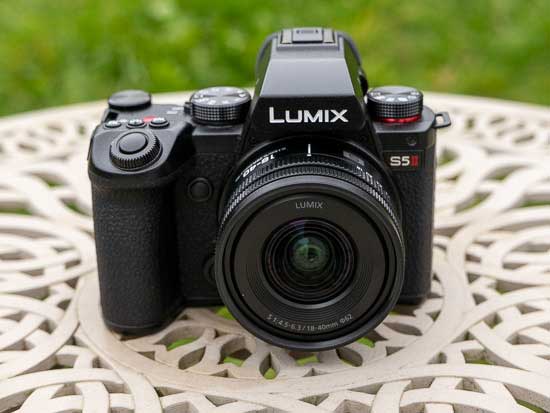

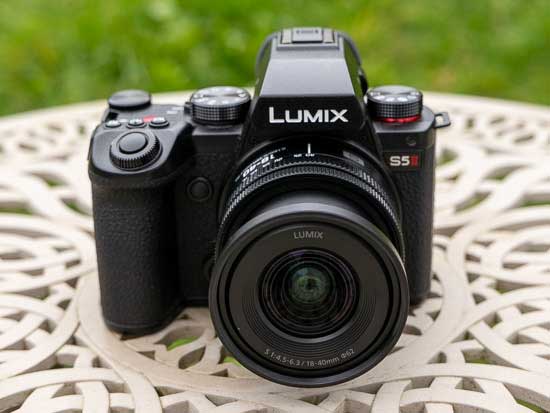
Build quality impresses too. Despite its diminutive size and weight, it still has the same weather-resistant metal barrel as Panasonic’s S PRO lenses, which are significantly more expensive.
One feature that differs from most of the other L-Mount lenses is the MF/AF switch for focusing modes – it’s the only switch on the barrel. Other S PRO lenses feature a (wonderful) manual focus clutch instead.
By default, manual focus distances are observed on-screen as you make changes. We love how the focus range (depth of field) is also displayed (in green on the range slider), so you can appreciate the impact of aperture on the focus range. Focus peaking provides an additional manual focus aid.
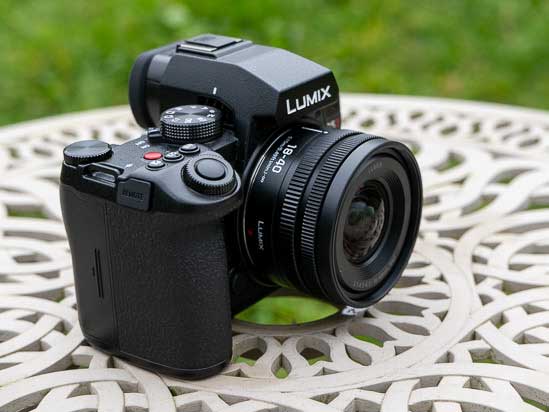
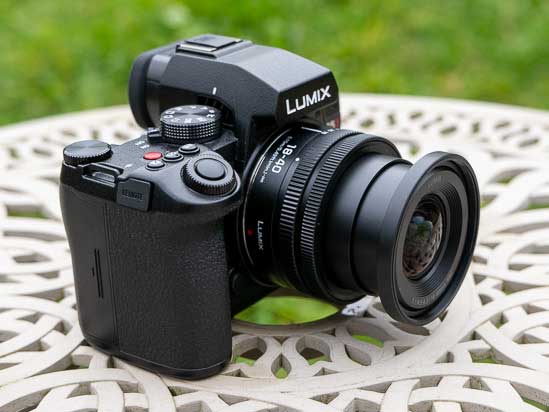
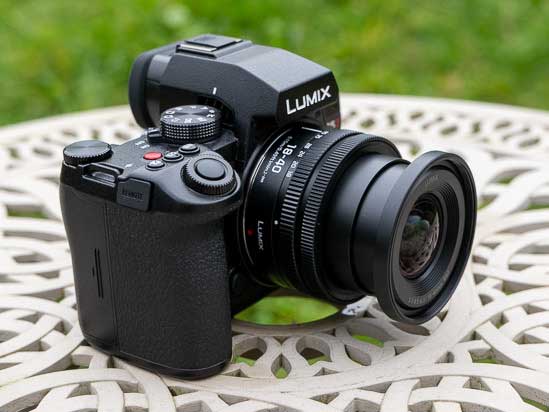
While not billed as a macro lens, the Panasonic Lumix S 18-40mm F4.5-6.3’s minimum close focusing distance of 15cm / 0.49ft and maximum magnification of 0.28x enables close up work.
The only thing to bear in mind is that these best specs are only available at the 21mm focal length, not throughout the entire zoom range – zooming in to 40mm actually reduces the close focusing distance significantly to 0.35m/1.15ft, so you’ll actually get better macro shots at 18-21mm.
There is a mechanism within the lens that suppresses focus breathing. We mounted the camera and lens to a tripod and manually focused the entire focus range at various focal lengths to check how well the mechanism works. There is still focus breathing, but it is kept to a bare minimum. Impressive.
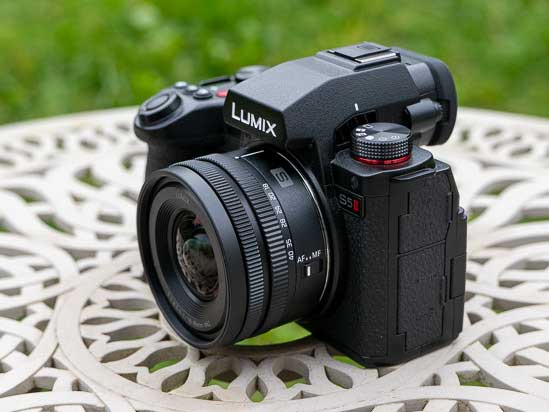
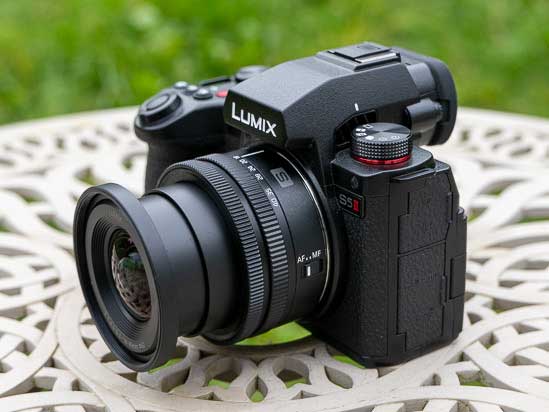
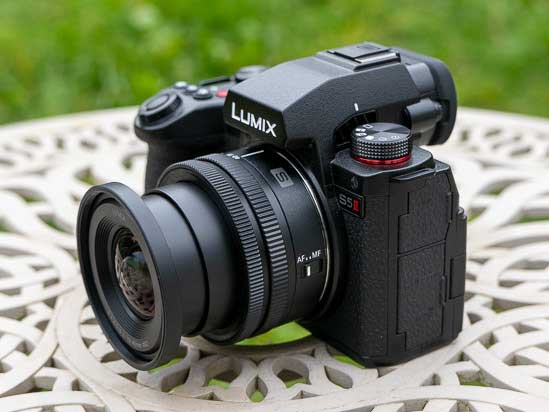
Focal lengths are marked on the zoom ring (18, 20, 24, 28, 35 and 40mm) and it’s an easy quarter turn to transition between the collapsed position and the 40mm telephoto setting.
Yes, this is the only Lumix S series lens to feature a collapsible design in order to make it so small. The lens is shortest when collapsed and longest at 18mm, extending out by an additional 3cms to around 7cms in total approximately, with the 40mm focal length being ever so slightly shorter.
The slim zoom ring is well dampened, enabling smooth zooms. By default the focal length is displayed on screen while any changes are made, plus it’s easy to make precise changes to the nearest 1mm.
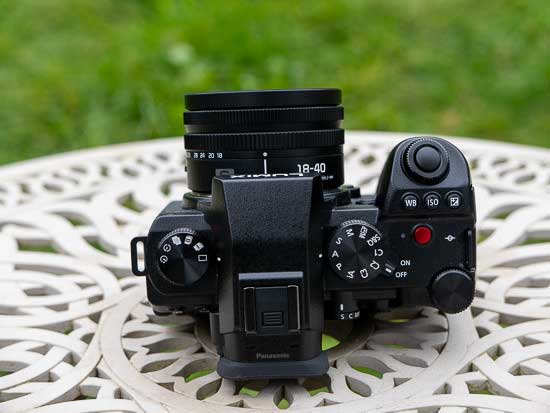
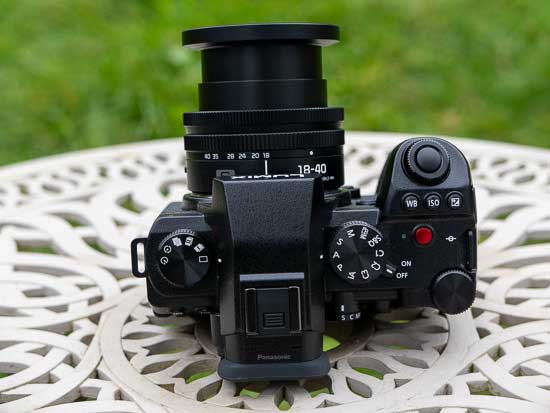
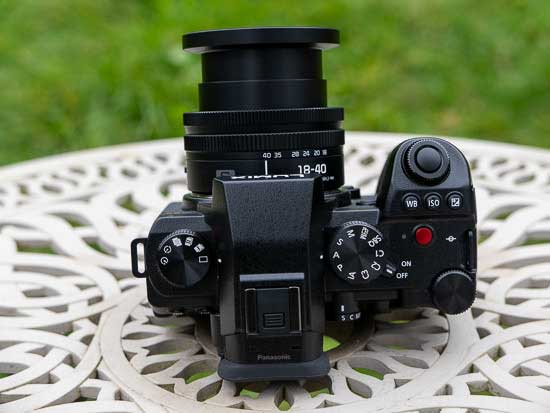
Like the zoom ring, the focusing ring handles well despite being so slim. Tiny focus changes are possible and fast transitions are smooth.
Both ridged rings feel great in the hand and we would expect them to stand the test of time. They are in good proportion for a lens of this size, plus positioned intuitively with the focus ring at the end of the barrel and the larger zoom ring closer to the camera.
When used with the S5II for photography, the autofocus of the Panasonic Lumix S 18-40mm F4.5-6.3 lens is pleasingly rapid, plus it’s silent, which is appreciated even more for video. What we especially love is the behaviour of autofocus for video, where it is geared differently to the photo mode.
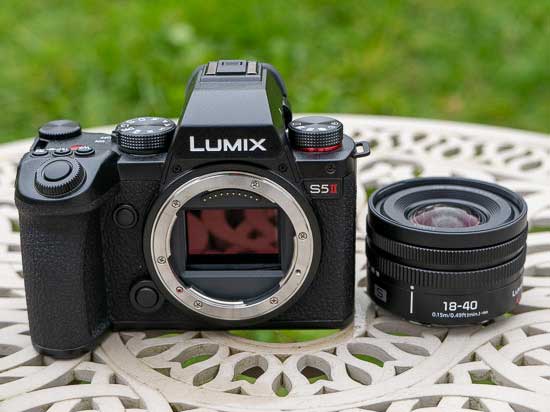
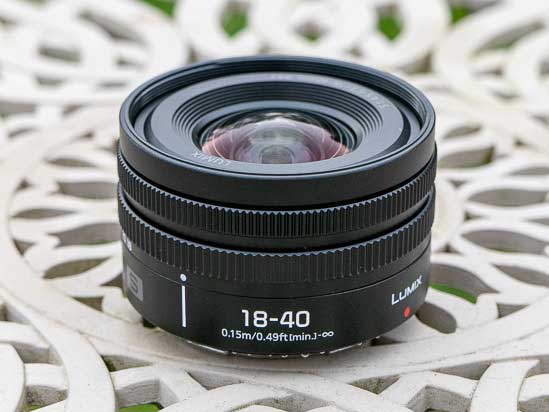
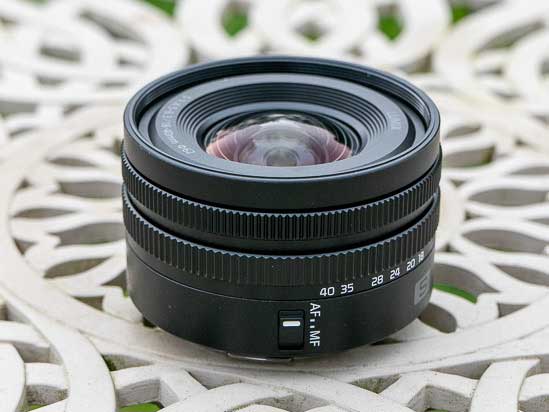
Image stabilisation does not feature within the lens, which means that you’re relying on the camera’s in-body stabilisation instead. No problem, the S5 II used for this test has 5-stops of image stabilisation system when used with a non-stabilised lens like the 18-40mm, so you’re in good hands.
For video there are additional ‘e-stablization’, ‘active’ and ‘boost I.S’ options and with everything activated, smooth and steady handheld videos are entirely possible.
Build quality is very good. This lens feels solid enough in your hand, even if it is mostly made out of plastic, with a metal lens mount.

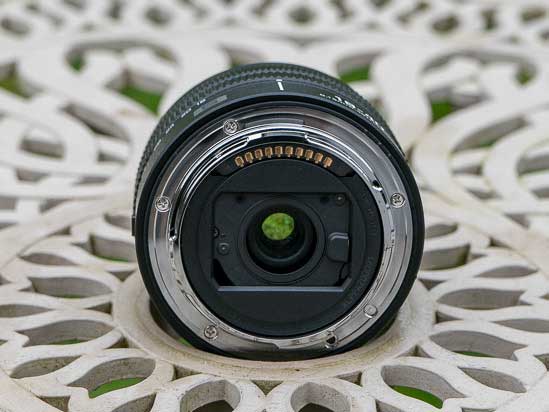
It’s also weather-proof, being both dust and splash resistant and working all the way down to -10 degrees. We successfully used it in more inclement conditions with no adverse effects.
There’s also a a fluorine coating on the front lens element to help repel water, oil, and any other contaminants, as well as making it easier to clean.
The lens ships with front and rear lens caps, but there’s no lens hood or case included in the box.
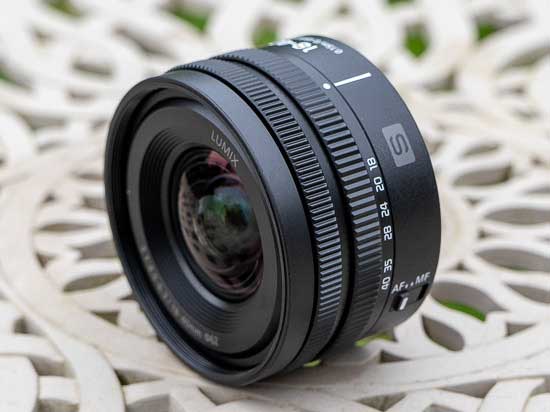
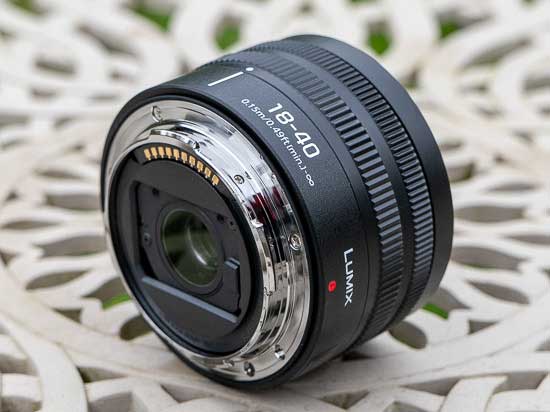
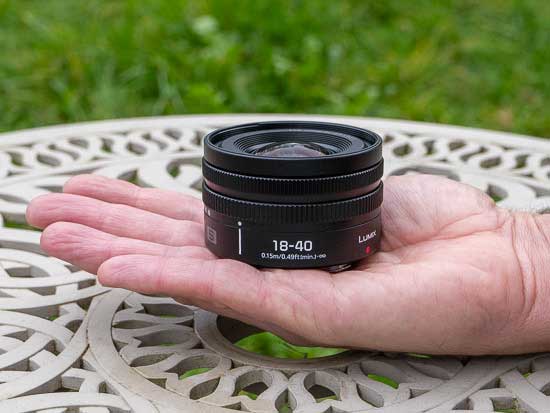
From its lightweight yet surprisingly solid build quality to easy handling and impressive focusing performance, the Panasonic Lumix S 18-40mm F4.5-6.3 proved to be a breeze to use.
Focal Range
At the 18mm focal length the angle of view is 100 degrees.
 18mm
18mm
At the 40mm focal length the angle of view is 57 degrees.
 40mm
40mm
Chromatic Aberrations
Chromatic aberrations, typically seen as blue or purple fringes along contrasty edges, were not very apparent in our test shots, only appearing in very high contrast areas.
 18mm
18mm
 40mm
40mm
Vignetting
With the lens set to its maximum apertures, there is some obvious light fall-off in the corners, especially at the wide end of the zoom range, requiring you to stop down by 3 f-stops to completely prevent it.
 18mm
18mm
 40mm
40mm
Distortion
The Panasonic Lumix S 18-40mm F4.5-6.3 exhibits some mild barrel and pincushion distortion in the JPEG files, as you can see in the photos below, which will you need to correct in post-processing.
There is a huge amount of distortion present if you open the RAW files in software that doesn’t have the correct lens profile selected, especially at the wide end of the zoom range.
 18mm / JPEG
18mm / JPEG
 40mm / Raw
40mm / Raw
 40mm / JPEG
40mm / JPEG
 40mm / Raw
40mm / Raw
Sunstars
The Panasonic Lumix S 18-40mm F4.5-6.3 produces fairly nice sunstars when stopped-down to f/22-f/32, as shown below, and flare is well controlled even when shooting directly into the sun.
 18mm
18mm
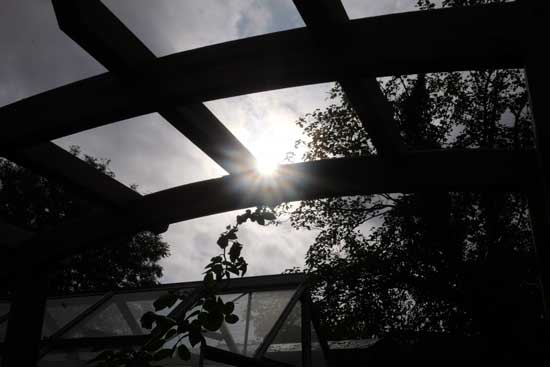 40mm
40mm
Macro
The Panasonic Lumix S 18-40mm F4.5-6.3 offers a minimum focusing distance of 0.15m/0.49ft at focal length 18-21mm and 0.35m/1.15ft at focal length 40mm, with a maximum reproduction ratio of 0.28x at focal length 21mm.
 18mm
18mm
 40mm
40mm
 18mm
18mm
 40mm
40mm
 18mm
18mm
 40mm
40mm
Bokeh
Bokeh is a word used for the out-of-focus areas of a photograph, and is usually described in qualitative terms, such as smooth / creamy / harsh etc.
In the Lumix S 18-40mm F4.5-6.3 lens, Panasonic employed an iris diaphragm with 7 rounded blades, which has resulted in fairly appealing bokeh.
We do realise, however, that bokeh evaluation is subjective, so we’ve included several examples for your perusal.
 18mm
18mm
 40mm
40mm
 18mm
18mm
 18mm
18mm
 18mm
18mm
 18mm
18mm
 40mm
40mm
 40mm
40mm
Sharpness
In order to show you how sharp the Panasonic Lumix S 18-40mm F4.5-6.3 lens is, we are providing 100% crops on the following pages.
Credit : Source Post






